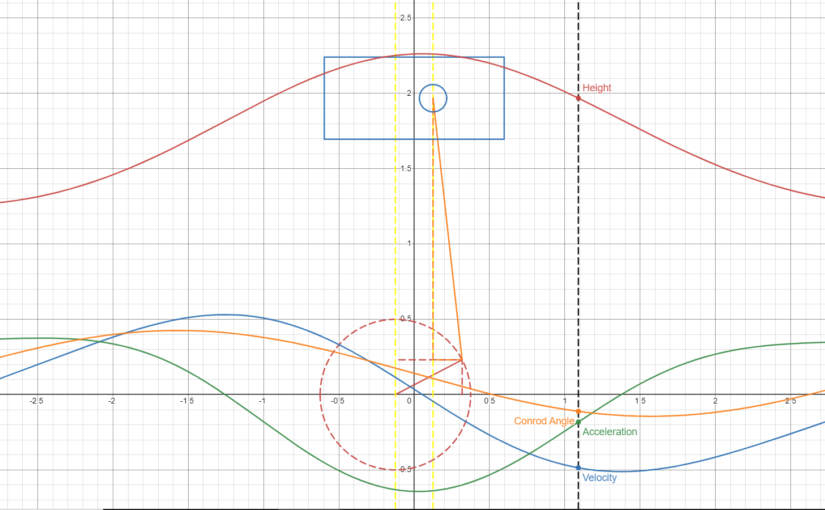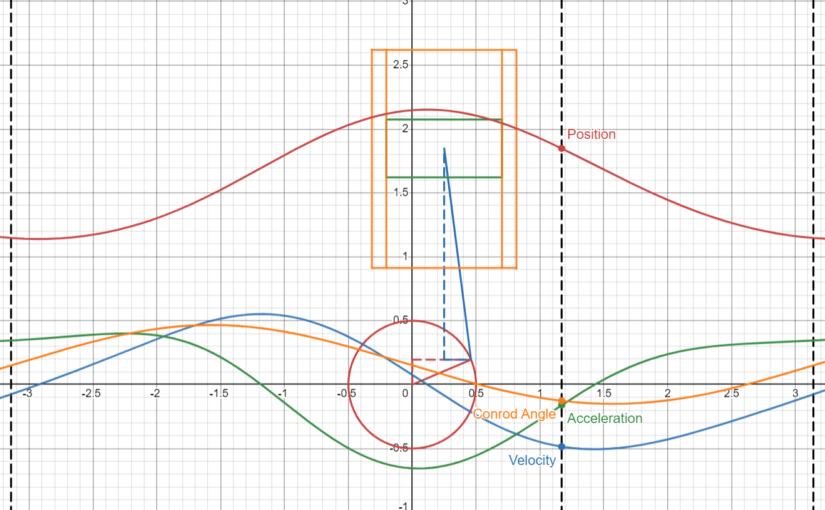Recently I went to a university open day where I spoke to the Technical Specialist for Motorsport. There I showed him my previous blog on this topic and my questions in it regarding offset crank’s use in real life. He then explained that most of the time offset crank isn’t used as it makes packaging of the engine harder; I guess it also requires redesigning/building of the block during prototyping. He also explained that there is sometimes a small offset at the wrist pin instead to slightly achieve the same effect. The final problem he mentioned about offsetting anything is that it causes uneven wear to the cylinder wall, which makes sense.
After getting home from the open day I created the graph below to see if offsetting the wrist pin does have the same effect as the crank offset in terms of connecting rod angle:
And as you can see, offsetting the piston has the same effect as offsetting the crankshaft! The problem that immediately came to thought is that this can increase frictional losses because the wristpin is no-longer in the centre of the piston, so the force from combustion (which is in the centre) is now creating a moment of torque around the wrist pin; causing the bottom right and top left sides of the piston to be pressed against the cylinder wall.
I tried to create a graph to show the torque mentioned above but had difficulty calculating the force from combustion:
While I think the force during compression seems pretty realistic (interpolating between 1*atmosphere and compression ratio*atmospheric pressure), the pressure during combustion has to be off. I’m certain the cylinder cannot have approximately 100GPa at the beginning of combustion, right? (my working out is below)
I used the formula PV = k modified to PV = E as the SI units multiply to form Joules and then found E using the chemical energy density of gasoline and an air fuel ratio of 14.7 to 1 (assuming volumetric efficiency of 100%). I think the inaccuracies are caused by not modelling the thermal losses of the cylinder, which normally takes away from the energy used from combustion.
After the confusing failure of the forces graph I decided to see what would happen if I decide to mix the wrist pin and crank shaft offsets together and therefore made this graph:
As expected, the normal reduction of connecting rod angle occurred but I’m still curious as to what forces are being put into the cylinder walls; maybe next time, potentially using an engine simulator to get a plot of the pressure vs crank angle!


